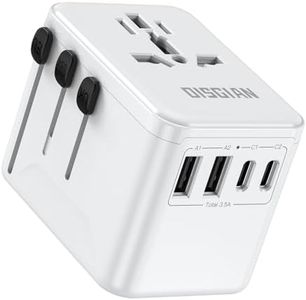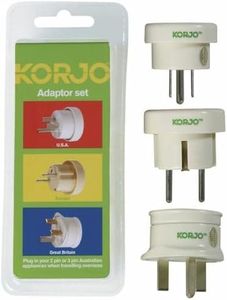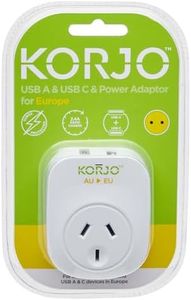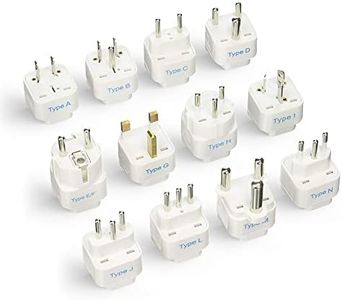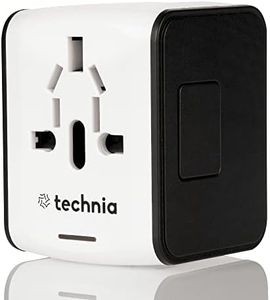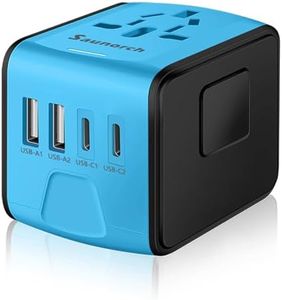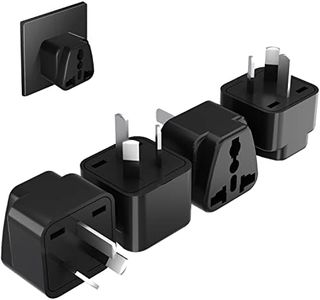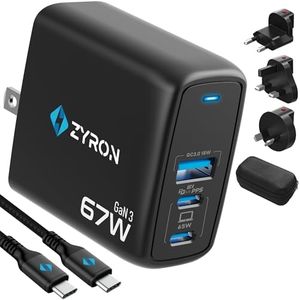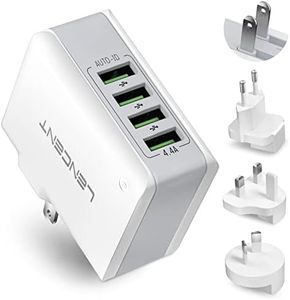We Use CookiesWe use cookies to enhance the security, performance,
functionality and for analytical and promotional activities. By continuing to browse this site you
are agreeing to our privacy policy
10 Best Travel Universal Adapters
From leading brands and best sellers available on the web.Buying Guide for the Best Travel Universal Adapters
Choosing a travel universal adapter is all about ensuring you can safely and conveniently plug your electronic devices into outlets around the world. Because power outlets and plug types differ widely between countries, having an adapter that's both reliable and suited to your needs is essential. The goal is to keep your devices charged and functioning without worrying about compatibility problems or damaging your equipment. When picking a travel adapter, pay special attention to the kinds of devices you’ll use, your travel destinations, and any additional features that can make your trips more comfortable.Plug Type CompatibilityPlug type compatibility refers to the variety of plug shapes and socket types the adapter can fit. There are over a dozen standard plug types worldwide, such as Type A, C, G, and I. The more regions an adapter can cover, the more flexible it is for international travel. Some adapters only work in select regions, while others offer truly global support. To pick the right one for you, think about which countries you travel to most often and make sure the adapter supports those plug types. For occasional or worldwide travelers, a multi-region or 'all-in-one' adapter is typically best.
Voltage SupportVoltage support means the ability of the adapter to handle different electricity voltages (typically 110-120V in the Americas and 220-240V in most other places). Many modern devices, like phones and laptops, are 'dual voltage' and automatically adjust, but some devices are not. Most travel adapters do not convert voltage; they simply allow your plug to fit, so using a device with the wrong voltage can be dangerous. Always check your devices for voltage support, and if you need to use appliances that aren't dual voltage, consider a separate voltage converter — standard adapters are not designed for this purpose.
USB Ports and Power DeliveryMany travel adapters include built-in USB ports to let you charge phones or tablets directly, sometimes with features like 'fast charging.' Some have only traditional USB-A ports, while others feature USB-C, which is becoming standard for newer devices. More ports mean you can charge multiple gadgets at once. If you usually carry several devices (like a phone, tablet, and camera), look for an adapter with multiple USB ports. If you have power-hungry devices, check whether the adapter offers high-power output or specialized options like USB Power Delivery.
Built-In Safety FeaturesBuilt-in safety features protect your devices from electrical issues like surges, overloads, or short circuits. These can include fuses, shutters, and built-in surge protection. Higher safety means less risk of damaging your devices or facing electrical hazards, especially in areas with inconsistent power supply. If you’re traveling to destinations with uncertain electrical infrastructure, or if you plan to plug in valuable electronics, pay special attention to safety ratings and features when choosing your adapter.
Build Quality and SizeThe build quality and size refer to how sturdy the adapter feels and how easy it is to carry. Compact, robust devices are easier to fit in your luggage and are less likely to break during travel. Some adapters are bulky but provide more features, while others are slim and lightweight but may offer fewer plug types or ports. Consider how much luggage space you have, and whether you prefer a lighter option or can manage a slightly heavier one for extra features. If you travel often or to rough destinations, prioritize durability.




